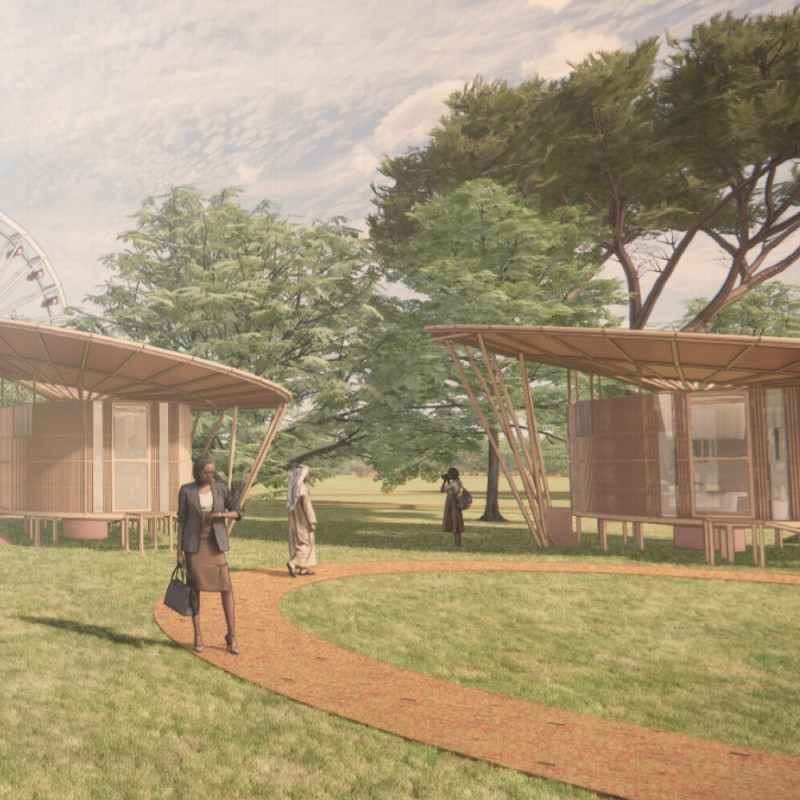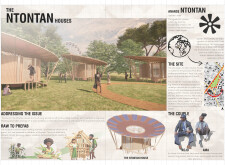5 key facts about this project
**Project Overview**
Located within the Efua Sutherland Children’s Park in Accra, Ghana, the Ntonan Houses project aims to address urban housing challenges while integrating local cultural elements and sustainable practices. The initiative responds to pressing issues such as flooding and water scarcity by providing off-grid modular dwellings designed to enhance community resilience and accommodate various demographics, with a focus on vulnerable populations, including street children.
**Cultural and Environmental Integration**
The design is anchored in the symbolism of **Ananse Ntontan**, which represents wisdom and the interconnectedness of life within Akan culture. This cultural reference informs the layout and communal objectives of the project, promoting relationships between residents and the environment. The architectural approach emphasizes flexibility through modular living, allowing for adaptable housing solutions. Sustainable building practices are central to the project, with a vocabulary that incorporates eco-friendly resources and encourages local engagement in construction processes.
**Material and Spatial Composition**
The Ntonan Houses utilize bamboo, sustainably sourced wood, and recycled materials to achieve structural integrity and aesthetic appeal while minimizing environmental impact. The use of solar panels within the design facilitates energy autonomy for the residents. Architecturally, the structures feature curvilinear forms that resonate with local vernacular aesthetics, elevated on stilts to mitigate flooding risks.
The spatial organization emphasizes interconnected units that foster communal interaction through shared spaces. Design elements such as common areas for collaboration and private sanctuaries balance communal living with individual privacy. Curved pathways link the houses, encouraging movement and social interaction while preserving the natural landscape.



















































